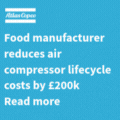
Posted to News on 13th Nov 2007, 16:45
An introduction to hazardous areas, ATEX and IECEx
This article from Kopex International explains the different types of hazardous areas, the European ATEX Directive and the similar international IECEx scheme.

Since 1 July 2006 all existing sites in Europe, as well as new sites, must comply fully with the requirements of the ATEX Directive. In fact there are two ATEX Directives as follows: ATEX 100a applies to equipment manufacturers and ATEX 137 applies to end users. The aim of the ATEX Directives is to protect employees, the public and the environment from accidents owing to explosive atmospheres.
ATEX Directive 100a
ATEX 100a covers both electrical and non-electrical products intended for use in hazardous areas, including mechanical equipment. The Directive came into existence in 2003 and products placed on the market in the European Union designed for use in hazardous areas must have ATEX certification and bear the ATEX marking. The obligation is placed upon the manufacturer or supplier of the product and the intention is to facilitate free movement of goods within the EU.
Products are categorised 1, 2 and 3, with category 1 meaning the product employs a very high level of protection, category 2 denotes a high level of protection, and category 3 denotes a normal level of protection.
ATEX Directive 137
ATEX 137 sets out to improve the safety of all workers potentially at risk from explosive atmospheres; this is achieved through duties placed upon the employer. The directive harmonises the law of EU member states concerning equipment and protective systems intended for use in potentially explosive areas.
Its main requirement concerns the need to classify areas as Zones 0, 1 and 2 for gases and vapours and Zones 20, 21, 22 for dusts. Equipment for use in these areas must be selected in accordance with ATEX 100a and marked with an Ex logo. In workplaces where safety restrictions apply throughout the site, such as refineries, the sign must be applied at the entrance of the site – individual signs would not be required.

Ignition
A mixture of air and hazardous gases may ignite by coming into contact with a hot surface. Ignition depends on surface area, temperature and concentration of the gases. Certified equipment, tested by approved agencies, receives a temperature code (T1-T6) indicating the maximum surface temperature where it can be used.
The influences of the ATEX Directives are spread far and wide, covering industries and applications as diverse as oil and gas exploration, food processing, brewing, pharmaceutical production, paint spraying, flour milling and the storage of grain in silos – indeed, anywhere that a potentially explosive combination of a fuel, oxygen and ignition source can all be present. Of course, the conditions also have to be right for an explosion to occur, which means that factors such as the temperature and the ratio of fuel to oxygen also have an influence.
While there has been a great deal of attention paid to primary equipment destined for use in hazardous areas, some types of component have occasionally been neglected. In a few cases this has been through ignorance, but more often it has been due to a lack of suitable products. Electrical conduit and fittings, for example, are commonly used within hazardous areas and, although flameproof barrier glands have been available for many years, the ATEX Directive imposes additional requirements that mean many of the tried-and-tested glands still do not match the ATEX requirements.
Internationalisation
The IECEx scheme (International Electrotechnical Commission for Certification to Standards Relating to Equipment for Use in Explosive Atmospheres) meets the requirements of international standards such as those prepared by TC31 (the IEC Technical Committee concerned with Equipment for explosive atmospheres). The IECEx Certified Equipment Programme provides a certificate of conformity that includes testing and assessment of samples, compliance of samples with IEC standards, assessment of manufacturing premises and ongoing surveillance audits.
All the products specified as being IECEx-compliant have been certified through the programme. Kopex claims that it is currently the only provider of a range of cable management products (flexible conduit, fittings and accessories) to carry IECEx certification. Kopex can provide advice on the specification of approved electrical conduit systems for specific hazardous area applications.




